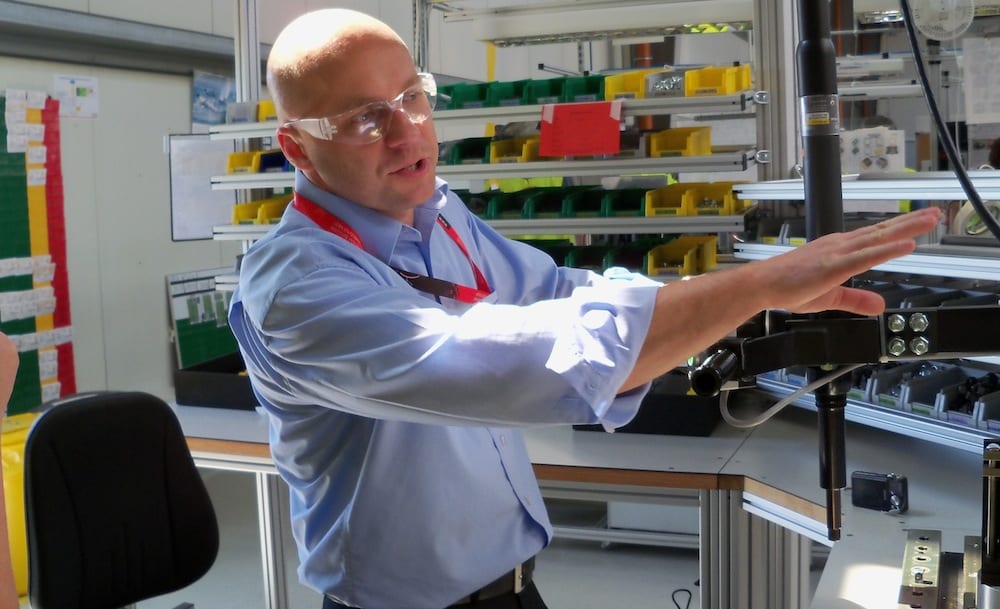
In your lean transformation process or result oriented?
FEATURE – Is your organization process-oriented or results-oriented? The fourth article of Hazards on the road to lean looks at what happens when you focus on the what, but not on the how.
Words: Malgorzata Jakubik and Robert Kagan, Lean Enterprise Institute Polska
As no true lean person should walk by waste and ignore a chance for improvement, we felt the need to put together our reflections on things big and small that, while working with our customers, we have found to be common “speed bumps” or even show stoppers in a lean implementation. Whether systemic or tool-related, these obstacles have one thing in common: they tell our “war stories,” which we want to share with those on the road to lean, hoping they will warn them against frequent hazards others have struggled with.
GIVE YOUR PROCESSES A CHANCE TO PRODUCE GOOD RESULTS
-SWITCHING ORGANIZATIONAL FOCUS FROM RESULTS TO METHODS-
We typically implement lean to change our companies and turn them into more profitable organizations. Like it or not, results are important and no project can ever start without the promise of a decent profit. Let us be clear about this – we are not changing the wasteful ways of our companies just for the sake of changing them. Ours are sound economic reasons.
We have heard it for years: we need good processes to produce good results. Still, when it comes to actual strategies, there seems to be an insurmountable difficulty of switching the everyday focus from what and how much we need to achieve to how we should behave to achieve it.
To solve the problem we need to know its causes, just like to get results we need to focus on changing the process. But why is this so difficult? Here are a few of the reasons we have thought of:
- We have traditionally been measured against our results with little or no interest in how we got them;
- Pressure from the top. We understand processes are important, but our bosses don’t care. They are often all about the results, and we simply transfer their wishes and apply their way of thinking to our own behaviors;
- Resources and short-term losses. Fixing a broken process and establishing a new ones will require resources: machines will need to be stopped to solve their problems effectively, people will have to be trained to work better in the future, we will have to make time for creating and improving standards, and so on. There is a cost to what we do. In short term, some of our overall numbers might even go down. Painful, isn’t it?
- The common fear of change, which pops up every time we introduce something new, no matter if lean related or not.
But what would happen if we kept nagging people about results instead of encouraging them to focus on processes?
The answer is, once again, painful and refers to a common occurrence:
- People will start being creative about how they share their results – metrics will become blurry, aggregated, and difficult to understand;
- People will lie and hide problems. For example, if you want nine people working on the line where 10 currently work but you don’t provide them with the knowledge and resources to improve the processes on the line, they will give you nine, but only on paper. In reality, they will have another person working there, officially assigned to the other line, which you have not told them to start optimizing yet;
- People will make risky decisions and think in short-term. They will jeopardize quality (for example, by accepting faulty components because there are no good ones available here and now) and safety for the sake of time, as deadlines approach.
We have seen these things happen every time and in every company where pressure was all that mattered. And these organizations paid for the lies told, the problems hidden and the risky decisions made – their results went down and they had to fight for them again. It’s a trend that can sometimes lead to the complete demise of an organization.
How to break the vicious cycle caused by an excessive focus on results, then?
Only when you have organization-wide consensus over change do you have a chance to switch from results to methods.
- Be honest with your boss about the change – you can promise visibly better and sustainable results, but also explain the investment in the processes that they will require. Warn him or her that in short term some metrics may drop. Even if they are not “lean at heart,” they will appreciate the logic.
- While building your strategies and plans, be very careful to include methods of bringing the change to every goal you want to achieve. If you want to improve quality, don’t just devise new ways of measuring it. Instead, work on your problem solving process, teach people how to prevent defects from happening, work with your suppliers on their processes so that yours are not affected by their shortcomings. If you want to improve on-time delivery, work on improving your planning methods and standards. Remember, however, that methods need the same, actually more discipline in monitoring their completion than results do, otherwise they will not work.
- Accept short-term losses – live with the “reds” on your results board, so long as you have good methods in place to turn them into “greens.” Don’t be angry with your people for showing you bad results. Instead, be firm and coach them to improve when they do not follow the agreed methods.
We have learned that there is an ultimate test to determine where the focus of an organization is - whether on results or processes - and it involves lean tools.
Look inside yourself and choose your answer. It will show you if the direction of your company is the right one to achieve a lean transformation.
What sentence best describes your organization and approach to lean thinking?
- First, we decided what lean tools to implement and then found a goal these could help with. When asked why we implement, say, 5S or pull, our people tend to say, “because it is required by management and it is a good thing for us to have.”
- We started with our goals and targets, and then looked for possible methods of reaching them. Lean tools naturally came up as a good way to improve our processes. When asked why we implement, say, 5S or pull, our people tend to say, “they will help us to better see where our problems are” or “they will keep us from stopping the line due to material shortages.”
Are you A or B?
This article is also available in Polish here
THE AUTHORS


Read more


THE TOOLS CORNER – This month, the author discusses how we can ensure quality problems are identified early, tackled swiftly and prevented from reoccurring.


CASE STUDY – Designing good products is challenging in itself, but doing so in harsh, impenetrable environments like the seafloor presents even bigger problems. The answer? Lean product development.


CASE STUDY – This project in Brazil, part of a city-wide effort to improve patient flows, led to impressive results in the waiting time to access cancer care.


CASE STUDY – This Turkish producer of sanitaryware has boosted its quality so dramatically it’s now a player in the German market. It did so by bringing drastic change to its production system.

